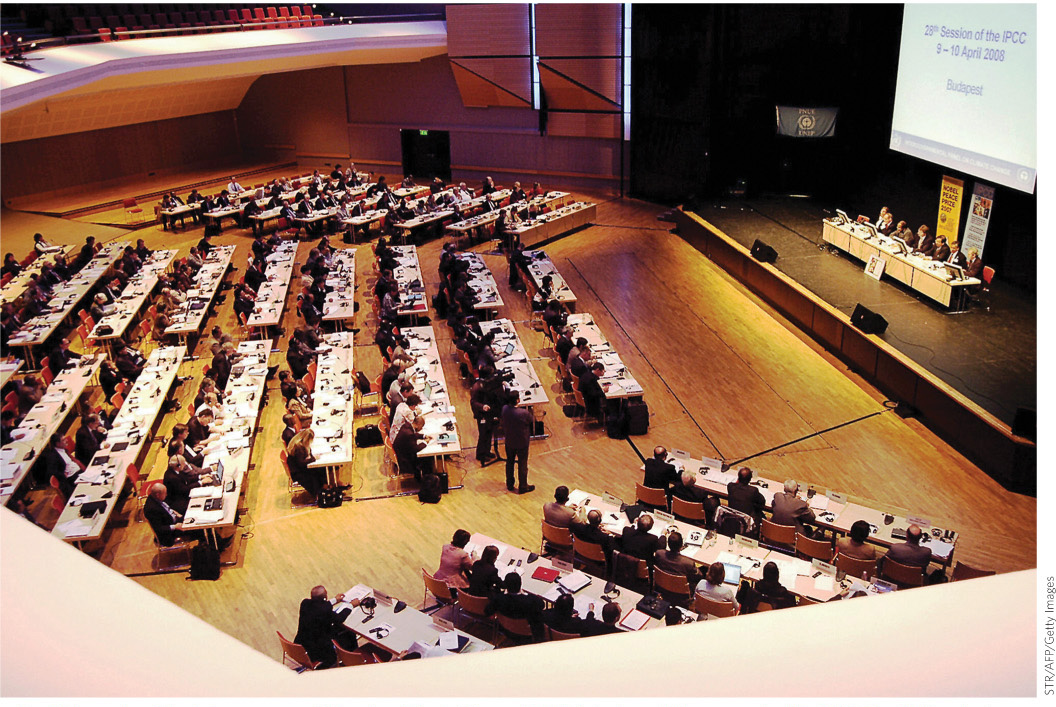Adapting policies is necessary but difficult.
So far, repairing the flawed CDM program has been as challenging as getting it into place was—a lesson, say critics, in the importance of adaptive management. Reforming the system would be much easier if more flexibility or fail-safe options had been built into the original plan.
These days, at any rate, there are no shortages of solutions being proposed. Some experts advocate a more intense focus on short-lived greenhouse gases like methane and black carbon (or soot). For his part, Wara advocates going in the opposite direction and making the global carbon market a market for CO2 rather than for all six gases. “That’s the most important one,” he says. “It’s emitted in the most prodigious quantities, and has a very long atmospheric life.” Most CO2 comes from the energy sector, so focusing on that gas alone would be a good way to ensure that the carbon market pushes humanity away from fossil fuels toward more sustainable energy sources.
China and India have fiercely resisted such changes to the CDM program, and critics charge that politics and political lobbying have had undue influence on reform efforts. When European delegates at one global climate conference suggested that any payments for incineration of HFC-23 should go into an international fund to help factories retool or phase out both the by-product and its underlying coolant product altogether, the Chinese government blocked the initiative, insisting that the money go directly to its own clean development fund.
Likewise, when several Kyoto countries objected to awarding credits to natural gas—burning plants (proponents argued that natural gas emits less CO2 than a coal plant would; opponents argued that such projects stray too far from the stated goals of the CDM—to fund and support clean, non-fossil fuel—based energy projects), the Chinese factions within the council overrode them.
In the few short years since the CDM was launched, the coolant manufacturers on the panel have amassed both power and influence. As Martin Hession, a past chair of the CDM, told the New York Times recently, even raising the possibility of trimming future payments was “politically hard.” “China and India both have representatives on the panel,” the paper reported. “And the new chairman, Maosheng Duan, is Chinese.” Some policy makers have worried that if the coolant makers aren’t paid to destroy the HFC-23, they will simply release it into the atmosphere. That, says Wara, would be catastrophic.
In 2010, though, the European Union finally put its foot down. And so did the United Nations. Responding to public pressure, both groups began dramatically altering the way they value and pay out HFC-23 emission-reduction credits. In 2013, the European Union stopped accepting HFC-23 credits from companies in its carbon trading system (which happens to be the largest in the world, by a long shot). The United Nations is refusing to award HFC-23 credits to any new factories, and in the fall of 2011 revised downward the percentage of coolant gas that would be eligible for the HFC-23 reduction credit. As Hession told the New York Times, the United Nations believed that such measures would eliminate the incentive to overproduce coolant gases. Some fear that the CDM program will collapse altogether before the CDM policy is modified to favor quality projects that actually do what the CDM was intended to do: help implement clean energy programs in developing countries. CDM backers and the UN hope that new, more ambitious, post-Kyoto climate targets will increase demand for offsets (and bring the United States, China, and other large emitters on board) and breathe new life into the CDM project.
Others are not so sure. Only time will tell.
In the meantime, many economists still agree that emissions trading schemes are the best hope we have for curbing greenhouse gas emissions. Even Wara has remained hopeful. “I am still enamored of market-based approaches to these problems,” he says. “For better or worse, those are the incentives that people respond to.” Besides, he adds, “As messy a story as Kyoto is, it’s still one we can draw valuable lessons from. In California we have a cap-and-trade program spinning into action now. They’ve learned a lot of lessons from the CDM and I think their program is much stronger because of it.”
Select References:
Andersen, S. O., & K. M. Sarma. (2010). Making Climate Change and Ozone Treaties Work Together to Curb HFC-23 and Other “Super Greenhouse Gases.” New York: NRDC Issue Paper. www.nrdc.org/globalwarming/files/hfc23.pdf.
Rosenthal, E. and A. W. Lehren. (2012). Carbon credits gone awry raise output of harmful gas. New York Times, August 9, 2012.
Van der Hoeven, M. (2013). CO2 Emissions from Fuel Combustion; Highlights. Paris: IEA Statistics.
Wara, M. (2007). Is the global carbon market working? Nature, 445(7128): 595—596.

PERSONAL CHOICES THAT HELP
The process of writing and revising policy, proposing it, voting on amendments, and finally enacting it as law is a complex and often messy one. The legislative process is often referred to as “sausage making” because of all the steps and input, as well as the fact that the final product often looks much different than the original.
Individual Steps
•Find out who and what is influencing your elected politicians. The website www.opensecrets.org allows you to look up the top individuals and industries that contribute to any candidate’s campaign.
Group Action
•When an important issue is not adequately addressed, concerned citizens often form petition drives. Signatures are collected and delivered to politicians, who can propose new legislation. Form a group to petition for an important issue that you feel is being overlooked and present the collected signatures to any politician who can propose new policy.
Policy Change
•Actions speak louder than words. Visit www.votesmart.org and find the voting record of your representative. How does he or she vote on environmental issues like climate change? If you do not feel your representative’s record is moving the country forward, volunteer for another candidate whose policies you support during the next election cycle.